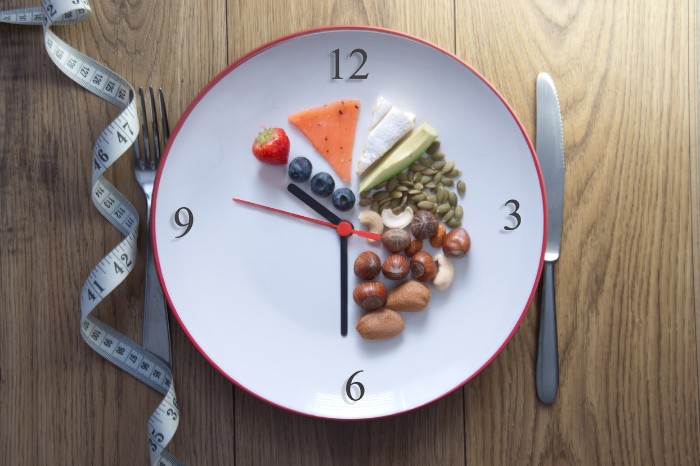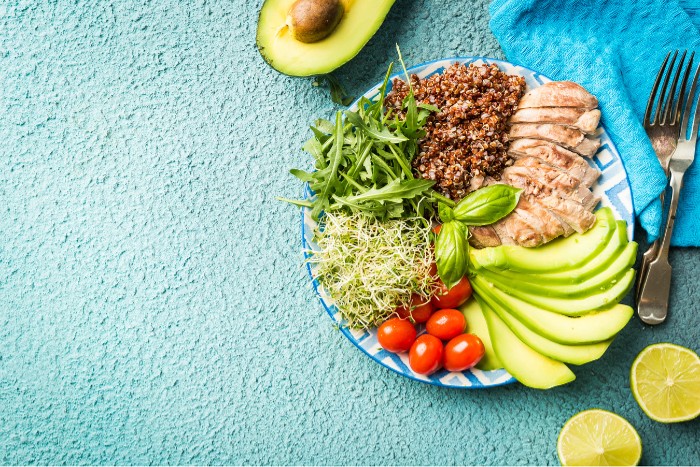A few years ago, I started intermittent fasting because I wanted to get off acid blockers. I had been taking them for over a decade and started to worry about what they were doing to my body. I had read somewhere that fasting for 12-16 hours could help with acid reflux, so I gave it a try. Most days I would not eat after 6:00PM and didn’t eat breakfast until around 10:00AM. I wasn’t perfect; there were some days I would eat out with family and friends a bit later than 6 but most days I followed a 16/8 schedule. It worked!
I learned a ton about the other benefits of intermittent fasting and what works to be successful that I’d like to share with you.
Intermittent fasting has become more popular in the past decade because we are getting smart and taking control of our health. Rather than relying on doctors to heal us, we are taking steps to prevent disease through a healthier lifestyle.
Always talk to your doctor prior to starting an intermittent fasting lifestyle.

Photo by CharlieAJA from Getty Images on Canva
What is intermittent fasting?
Intermittent fasting is purposefully alternating between periods of eating and fasting within a specific timeframe. It isn’t starving yourself; it’s being mindful about when you eat and drink to promote better health.
One of the most popular types of intermittent fasting is the 16/8 method. With this method, your fasting window is 16 hours and eating window is 8 hours. There are no rules about the times of the day these windows are scheduled. However, once you’ve determined your windows, stick to it so you don’t throw your body out of whack or make it harder to maintain. This schedule is typically followed every day, but you can choose to ease into it a few days a week then build up to every day.
The benefits of intermittent fasting
One of the most common reasons for intermittent fasting is weight loss but it helps with so much more. Studies have shown that it may contribute to:
- Improving metabolism
- Balancing insulin and glucose levels
- Fighting against prediabetes and diabetes
- Reducing chronic inflammation
- Helping your heart health
- A healthier brain
How to get started
- Get your doctor’s approval especially if you have a medical condition.
- Determine whether you can follow the 16/8 method every day or if you need to ease into it.
- Determine the eating window. i.e. eat between 10AM and 6PM, 12PM and 8PM, etc.
- Design your meal plans but stick to the basics. Try not to overcomplicate it which can make it hard to stick to your plan. There’s no specific diet you must follow; however, you’ll get the most benefits if you design one that’s full of nutrient rich, unprocessed foods. Consider meal prepping to ensure you’re eating healthier and don’t make bad choices.
Drinks you can have during the fasting window
- Water
- Black, green, and herbal teas
- Black coffee
- Sparkling water, unsweetened
Tips to succeed with intermittent fasting
- Drink lots of water. Regularly sipping water throughout the day, including during the fasting window can help you feel full.
- Eat mindfully. A meal should be something you enjoy and not rush through. Pay attention to the hunger signals and when you’ve had enough.
- Use smaller plates. This can help you control portions. Go back for seconds if you’re still hungry but wait until your food settles and your body tells you to eat more.
- Have a plan for social events. There’s true physical hunger then there’s mental hunger. Physical hunger is when your stomach is empty and comes with a decrease in energy. Mental hunger is a desire to eat out of habit, boredom, or external cues. Pay attention to these hunger triggers and listen to your body.
- Don’t overeat during the eating window and focus on protein, healthy fats, and complex carbs.
- Exercise lightly during the fasting window. i.e. yoga, walking, stretching. Save the more challenging workouts for the eating window.
If done mindfully, intermittent fasting can be sustained long term and can help you improve your health and increase longevity. Listen to your body and try to maintain a healthy diet full of proteins, healthy fats, and complex carbs to get the most benefits from this lifestyle.





Leave a Reply